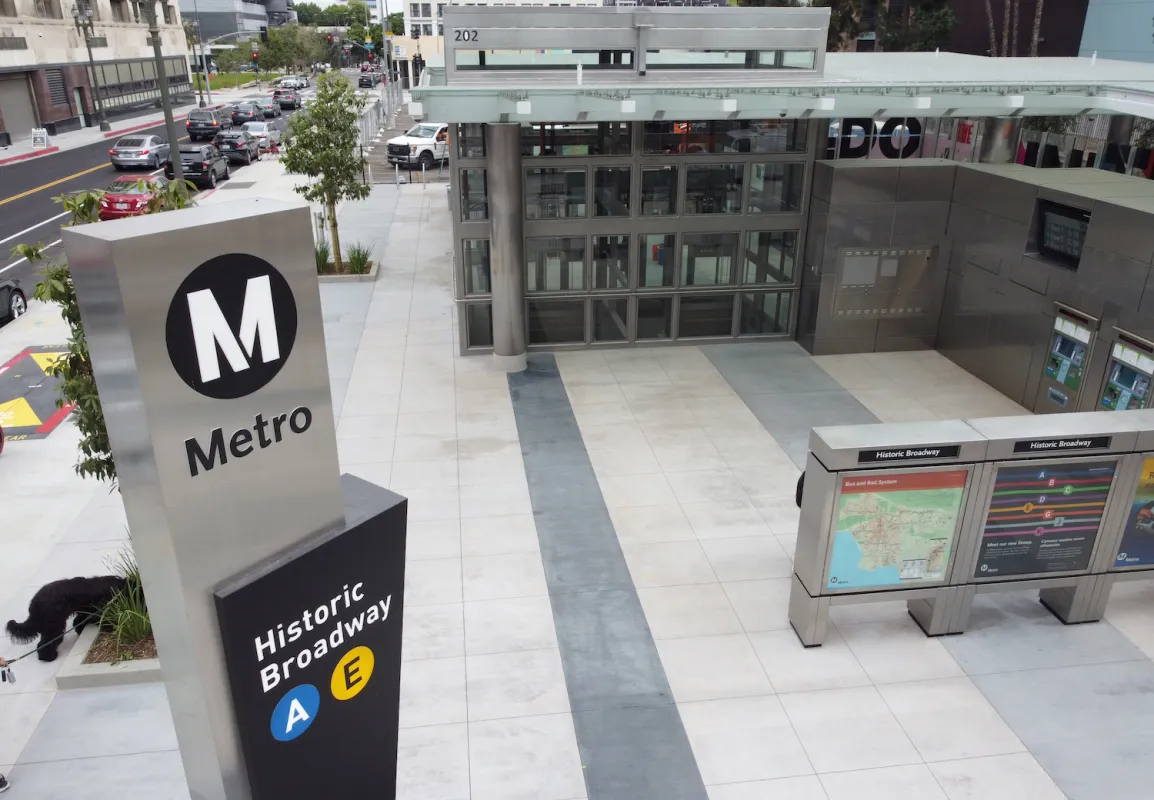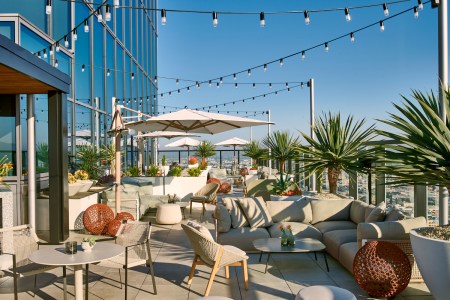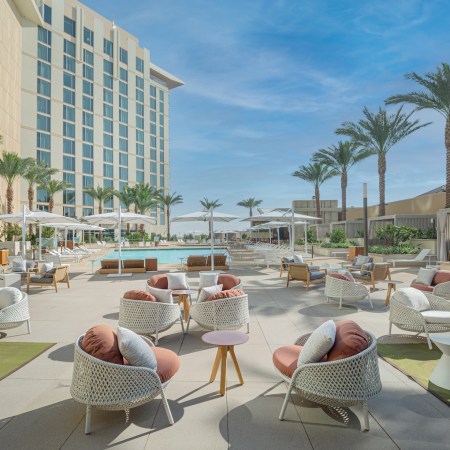While Los Angeles has been working on its disjointed metro system for the last several years, an actual breakthrough debuted in late June. A series of new stops in downtown LA now links the central hub of Union Station and another commuter station, 7th and Metro Center, to four of the six lines. These stations — Little Tokyo/Arts District, Historic Broadway and Grand Avenue Arts/Bunker Hill — also work to effectively turn the (blue) Los Angeles A line into “the longest light rail line in the US.” Now 49.5 miles, it stretches from Long Beach through south LA and Downtown, up past Highland Park and Pasadena, all the way to Azusa, with a stop both Downtown and a final station near Azusa Pacific University and Citrus College. New Yorkers may laugh, but this is officially the most accessible LA has ever been by train.
On a recent weekday, I rode the whole stretch — which still takes about two hours one way — in relative peace. The AC is strong, the trains are mostly clean (sparkling, by New York City standards) and a wealth of aboveground stops means access to WiFi is only limited briefly in the new underground tunnels downtown. (Odds are, WiFi will be installed soon enough in these high-tech stations.) The Downtown corridor is definitely the busiest section of the service, but even when the train was at its fullest, it topped out at about 80 to 90% capacity. Getting a seat wasn’t a problem, and equipped with headphones, the long ride was manageable — pleasant, even.
LA’s Best Rooftops Offer Five-Star Food and Spectacular Views
Our picks include Evan Funke’s impossibly in-demand rooftop, one of the best restaurants in townThe most impactful changes might be the stations in the middle of the service rather than those in Azusa. The plant-filled college campuses at the new terminus are quiet and mostly residential, and there’s not a whole lot to do in and around the Downtown Azusa station, either. Then again, students will certainly make use of the service, and it’s only been a few weeks: more restaurants, bars and attractions will likely pop up around the new hubs. It’s now possible for visitors to score a very low-cost hotel in Azusa and make their way to Downtown LA for less than $2. Before, the cheap rooms were more than offset by the high cost of Ubering in and out of the city.
For Long Beach residents who want to explore Highland Park and South Pasadena, or vice versa, the train is cheaper, easier and honestly quicker than the drive. Fares are $1.75 for a one-way ticket, and no rider will pay more than $5 a day. For weekly passes, the cap is $18, and once either amount has been “tapped” for the day, all transfers register as free. Instead of designating unlimited passes, the system works similarly to New York’s free bus transfer setup, when a bus ride taken right after a subway trip comes at no additional cost. The line will also likely lead to more locals spending time Downtown, where parking has become completely untenable, and an ongoing influx of great cocktail bars makes taking the train a desirable option.
Another connected stretch, the (yellow) E line can now take a rider from Atlantic Station in East Los Angeles (actual East Los Angeles, near Monterey Park, not the “east side”) through Downtown, Culver City and Palms to a station in the heart of Santa Monica. What would be the most useful is a line that connects the downtown Long Beach station with the Redondo Beach stop, LAX and onward to Santa Monica, effectively turning the west side into one accessible neighborhood and cutting into some of the worst traffic in the entire city. But these things take time.
The best part of the blue line comes right after departing Union Station to the south, when the train passes over the packed 110 downtown snarl — a congested area that can easily add 20 to 30 minutes to any trip at high-traffic hours — in a matter of seconds. Other highlights include the public art in the Little Tokyo/Arts District station and the fact that trains run with consistent frequency — I got out at several different stations to explore, and it never took more than 10 minutes for another A train to come. This might not be the case for less popular lines, but here service was remarkably consistent. Train service begins every morning at 4 a.m. and lasts until 11 p.m., with some lines extended until 1:30 a.m. While it’s no 24-7 New York City subway service, it’s an actual step toward solving the LA traffic problem, cutting down on emissions and dodging rising gas prices.
This article was featured in the InsideHook LA newsletter. Sign up now for more from the Southland.
























